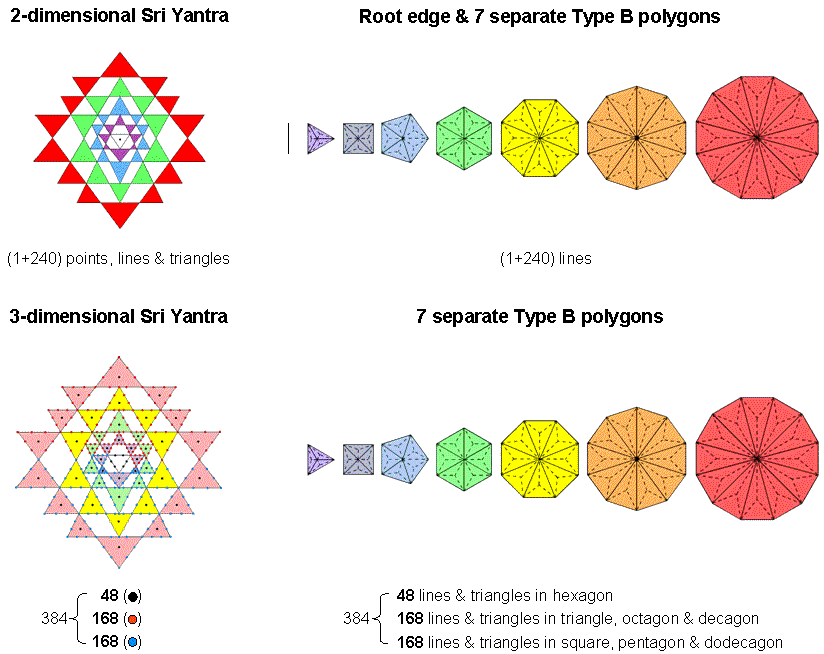
| << Previous 1... 40 41 [42] 43 44 ...81 Next >> |
#42 Correspondences between the Sri Yantra and the seven Type B polygons of the inner Tree of Life

In the 2-dimensional Sri Yantra, 240 points (corners of triangles), lines (sides) & triangles surround the central point, or bindu (see Table 4 of Article 35). Compare this with the separate root edge and the seven regular polygons of the inner Tree of Life when they are Type B. The former consists of one straight line and the latter comprise 240 straight lines as sides of their 144 triangles. The root edge is the source of these polygons, just as the bindu point symbolizing the Unmanifest is the source of divine Creation represented by the triangles of the Sri Yantra.
When its 43 triangles are tetractyses, the 3-dimensional Sri Yantra contains 384 yods other than the corners of the central triangle, which symbolize the trimûrti of Shiva, Brahma & Vishnu. They consist of the 336 yods lining the sides of the 42 triangles that surround the central one (168 red yods & 168 blue yods in each half) and 48 black yods that are either hexagonal yods on the sides of the central triangle or hexagonal yods at the centres of the 42 triangles surrounding it. Compare this with the geometrical composition of the seven Type B regular polygons. The hexagon has 48 lines & triangles and the other polygons have 336 lines & triangles (168 lines & triangles in the triangle, octagon & decagon and 168 lines & triangles in the square, pentagon & dodecagon). The counterpart of the 384 yods in the seven Type B polygons are their 384 lines & triangles. The six sides of the hexagon correspond to the six hexagonal yods on the sides of the central triangle and the 42 other sides & triangles in the hexagon correspond to the hexagonal yods that are the centres of the 42 tetractyses surrounding the central one.
The 48:168:168 pattern is characteristic of holistic systems (see The holistic pattern).
| << Previous 1... 40 41 [42] 43 44 ...81 Next >> |